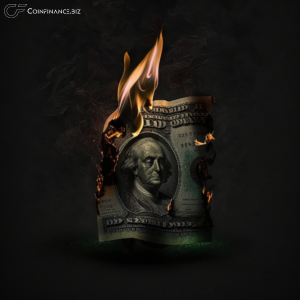On Friday, the US dollar displayed strength in response to data which indicated a growth in inflation during March, albeit at a slower rate. This reinforced the belief that the Federal Reserve would stick to its policy of increasing interest rates at the upcoming monetary policy meeting next week. In contrast, the yen showed weakness across the board as the Bank of Japan elected to maintain its ultra-low interest rates as expected, and made no alterations to its yield curve control (YCC) policy. This caused the Japanese currency to plummet to its weakest level in seven weeks against the dollar, and to its lowest since September 2008 against the euro.
During the week, the euro gained 1.8% against Europe’s single currency, whereas the dollar experienced a 1.6% weekly gain against the yen, its best weekly performance since late February. The dollar index, which measures the value of the greenback against six major currencies, increased by 0.2% to 101.65.
Friday’s figures demonstrated that the personal consumption expenditures (PCE) price index in March had increased by 0.1% after a rise of 0.3% in February. During the twelve months up to March, the PCE price index had grown by 4.2%, compared to February’s increase of 5.1%. However, when the volatile food and energy elements were excluded, the PCE price index increased by 0.3%, which matched February’s growth rate. The so-called core PCE price index rose by 4.6% year-on-year in March, following an increase of 4.7% in February. The Fed tracks the PCE price indexes as a measure of its 2% inflation target.
Joseph Lavorgna, the chief US economist at SMBC Nikko Securities in New York, commented that “You probably need a much bigger slowing in the growth rate to get the Fed comfortable that it’s succeeded in its mission; it’s not there yet. It doesn’t change the outlook (for policymakers next week).” Following the publication of the inflation data, the rate futures market priced in a 90% chance of a 25 basis-point hike next week.
Furthermore, a separate report indicated that the final University of Michigan consumer sentiment reading had risen to 63.5 in April, up from a three-month low of 62 in March, thereby strengthening the dollar. Additionally, the one-year inflation outlook of US consumers rose from 3.6 in March to 4.6 this month, reinforcing rate hike expectations and boosting the dollar.

The euro slipped 0.1% against the dollar to $1.1017 on Friday. Economic data painted a mixed picture for growth and inflation across the euro zone, which created uncertainty around the size of the European Central Bank’s expected interest rate hike next week. Preliminary data suggested that gross domestic product in the euro zone had expanded by 0.1% during the first quarter, which was below the 0.2% expectation in a Reuters poll.
Although the single European currency had fallen more earlier in the session, it trimmed its losses as investors sold the yen against the euro. This, in turn, spilled over to the euro/dollar cross. Jonathan Petersen, the senior market economist at Capital Economics, wrote in a research note that “We think the balance of probabilities is gradually shifting in the dollar’s favour. The ‘goldilocks’ regime of stronger activity data outside of the US seems to be fading, and we anticipate the dollar benefiting from safe-haven demand once the global growth picture starts to deteriorate more substantially in the coming months.”




